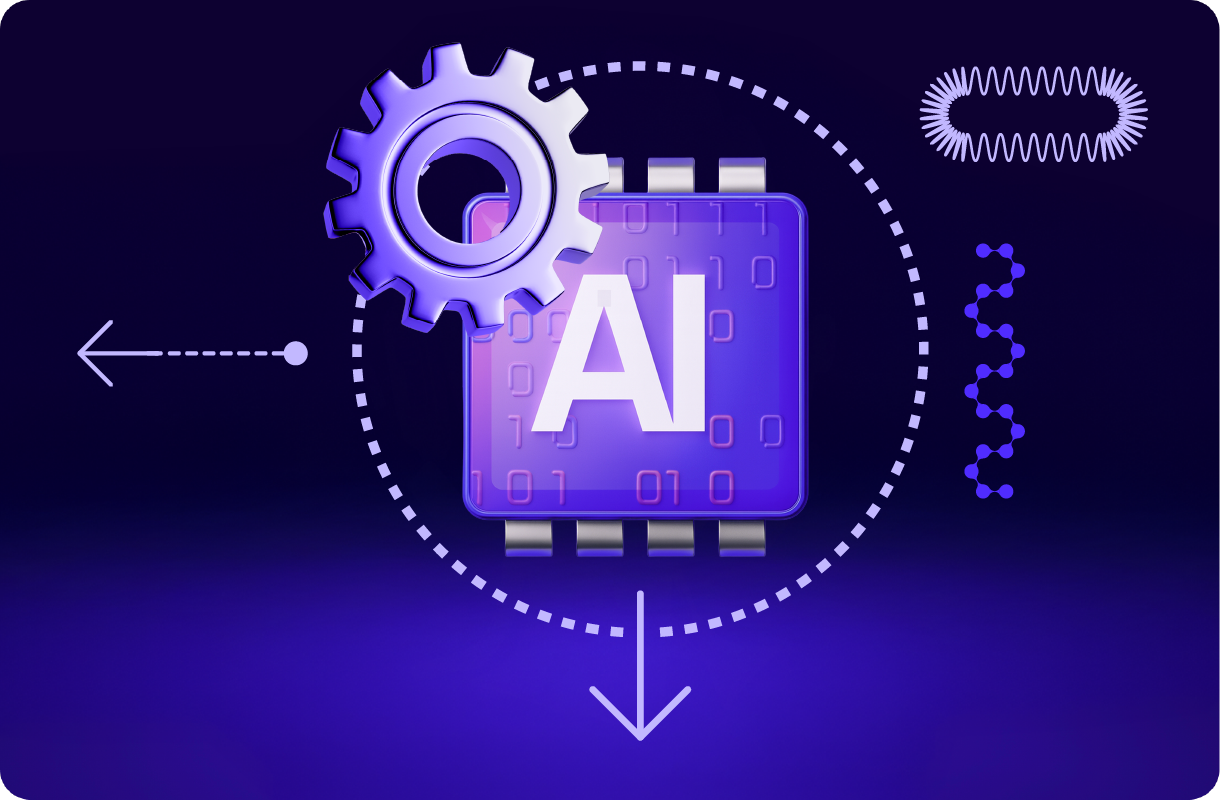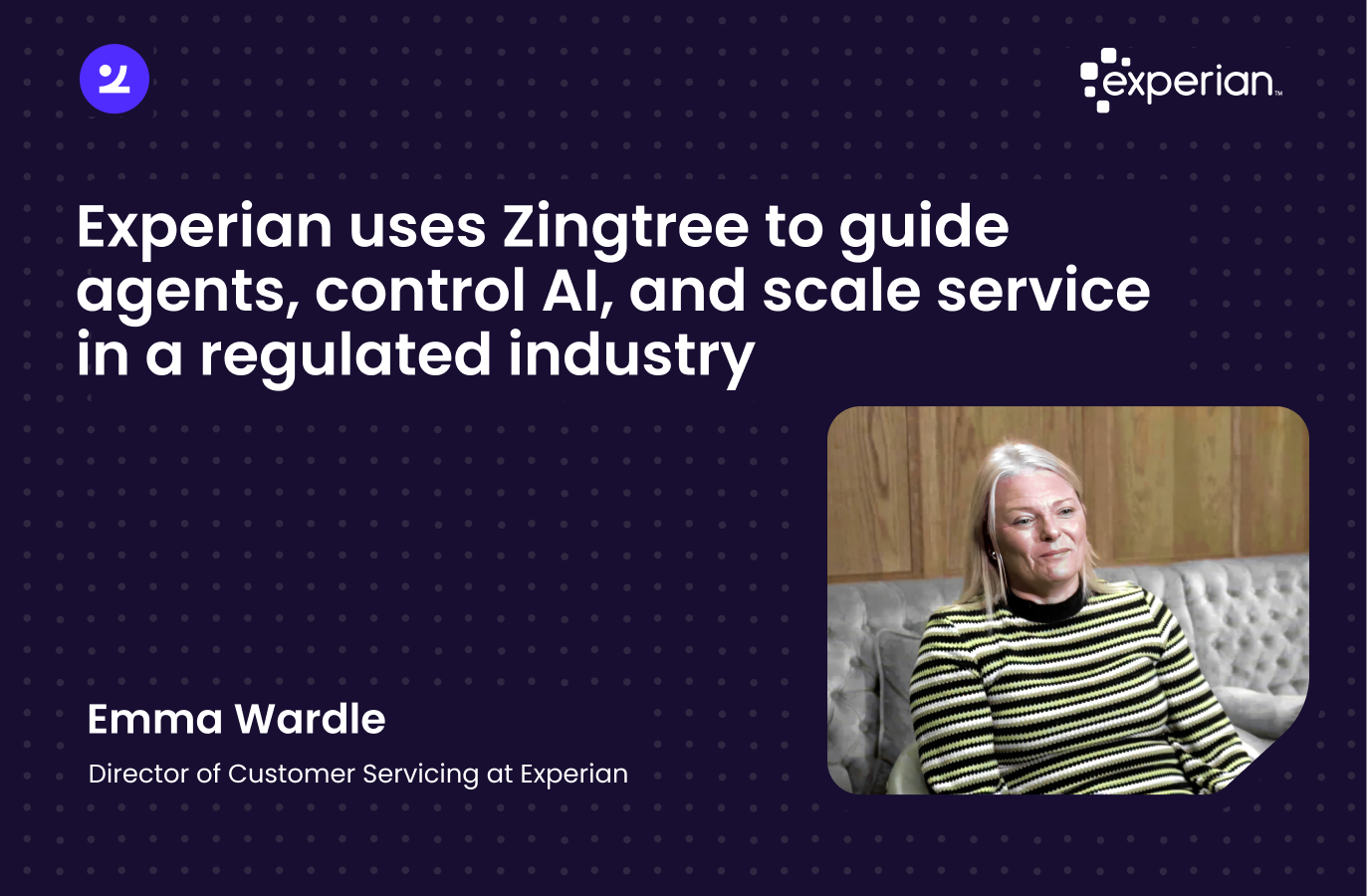7 AI-Powered Workflow Automation Tools for Support Teams (2025)
Support teams don’t need more bots. They need AI-enabled workflow automation that’s accurate, compliant, and plugs into the stack they already run on. Here are 7 AI workflow tools worth looking at in 2025.

Support teams today face an unprecedented choice in AI‑powered workflow automation tools, with platforms ranging from deterministic compliance‑first solutions to full‑scale robotic process automation. The best AI workflow automation tools for 2025 combine deterministic AI that prevents hallucinations, compliance-by-design architecture, and real-time bi-directional integrations with existing CRMs and ERPs.
This comprehensive evaluation covers seven leading platforms, ranking them based on confidence scoring capabilities, auditability features, integration readiness, and proven ROI metrics. Whether you're managing regulated customer interactions or scaling IT support operations, this guide provides the specific insights needed to select the right automation platform for your team's unique requirements.
How We Ranked These AI Workflow Tools
Our evaluation process prioritizes deterministic AI capabilities and compliance‑first design over generic automation features. We assessed each platform across five critical dimensions that separate enterprise‑ready solutions from basic workflow tools.
Deterministic AI evaluation forms our primary ranking criterion. Platforms must demonstrate confidence threshold enforcement that blocks low‑certainty responses rather than guessing. Tools that allow AI hallucinations in customer‑facing workflows receive significantly lower scores, regardless of their other capabilities.
Auditability and compliance‑by‑design represent the second core evaluation factor. Every workflow must be version‑controlled, trackable, and safe for regulated industries. Providers compete on integrated AI, process mining depth, vertical compliance templates, and low‑code ease of use to shorten time‑to‑value for enterprise deployments.
Real‑time, bi‑directional integrations with CRMs and ERPs determine deployment feasibility. Platforms lacking native connectors or requiring custom development for basic data synchronization score lower, as these limitations create implementation bottlenecks and ongoing maintenance overhead.
Integration readiness factors include:
- Native API connections to major business systems
- Real‑time data pull capabilities without batch processing delays
- Two‑way data synchronization for complete workflow orchestration
- Pre‑built connectors for common enterprise applications
- Security compliance certifications (SOC 2, GDPR, HIPAA)
Additional evaluation criteria encompass user experience design, technical support quality, and total cost of ownership. Nearly 49 % of tech chiefs say AI is now fully integrated into their core business plans, making platform selection a strategic decision rather than a tactical tool choice.
1. Zingtree
Zingtree leads our rankings because it delivers “AI That Doesn’t Guess” through unique confidence score validation that blocks uncertain responses before they reach customers. This deterministic approach makes it the only platform purpose‑built for regulated industries where accuracy cannot be compromised.
Best suited for: Healthcare, financial services, insurance, and consumer technology, as well as any organization requiring zero-error customer interactions with full audit trails. Government contractors and publicly traded companies also benefit from its compliance-first architecture.
Standout capabilities center on controlled automation rather than autonomous AI. The no‑code interface allows operations teams to build complex decision trees without IT bottlenecks, giving business users direct ownership of automation logic while reducing reliance on developer resources. Every decision point embeds explicit business logic that AI enhances rather than replaces.
Example workflow: A healthcare support workflow begins with symptom collection through structured questions. Zingtree's AI analyzes responses against medical protocols but only proceeds when confidence exceeds 95%. Low‑confidence scenarios automatically escalate to qualified staff, ensuring patient safety while maintaining workflow efficiency.
The platform’s compliance‑first architecture ensures every interaction is version‑controlled and auditable. Operations teams own guardrails and escalation rules, maintaining control over automated behavior within defined parameters. This approach prevents the unpredictable responses that plague generative AI implementations.
Zingtree delivers measurable ROI for over 700 enterprises worldwide, with proven results including 30% first‑call resolution improvement, 12× ticket deflection rates, and 30% customer satisfaction boosts. These metrics reflect the platform’s focus on deterministic outcomes rather than experimental AI features.
Key Takeaway: Zingtree’s confidence‑score gating delivers deterministic, audit‑ready automation ideal for regulated environments, driving measurable ROI while eliminating AI hallucinations.
2. Salesforce Service Cloud
Salesforce Service Cloud offers comprehensive CRM‑native automation with deep ecosystem integration, making it ideal for organizations already invested in the Salesforce platform. Its strength lies in unified customer data management and extensive third‑party app marketplace.
Best suited for: Mid to large enterprises with existing Salesforce investments seeking to extend CRM capabilities into automated support workflows. Sales‑driven organizations benefit from tight integration between support and revenue operations.
Standout capabilities include Einstein AI features, omnichannel case management, and robust analytics dashboards. The platform excels at routing complex cases based on customer history, contract details, and agent expertise. Advanced workflow builder supports sophisticated automation scenarios across multiple departments.
Example workflow: A B2B customer reports a product issue through multiple channels. Service Cloud automatically creates a unified case, pulls contract and purchase history, identifies the optimal support tier, and routes to specialists while notifying account managers of potential escalation risks.
The platform requires significant administrative overhead and developer resources for advanced customization. Unlike Zingtree's guardrail‑based confidence thresholds, Service Cloud relies on traditional rule‑based routing that may not prevent AI hallucinations in automated responses.
While Zendesk excels in high-volume scenarios, its integrations are less suited for orchestrating complex, multi-system workflows.
Over 80 % of Fortune 500 companies rely on Microsoft Power Automate to streamline their workflows, though Salesforce Service Cloud competes directly through its native automation capabilities and superior CRM integration.
Key Takeaway: Salesforce Service Cloud provides deep CRM integration and powerful analytics, but its rule‑based automation lacks deterministic confidence gating for regulated use cases.
3. Zendesk
Zendesk dominates the mid‑market support automation space with intuitive ticket management and AI‑powered customer interactions. Its strength lies in volume‑driven B2C support scenarios where speed matters more than regulatory compliance.
Best suited for: E‑commerce companies, SaaS platforms, and consumer brands handling high‑volume, relatively straightforward support requests. Small to medium businesses benefit from quick deployment and minimal administrative overhead.
Standout capabilities include Answer Bot for automated responses, intelligent triage that categorizes incoming requests, and comprehensive self‑service portals. The platform's AI chatbots handle routine inquiries while escalating complex issues to human agents based on predefined triggers.
Example workflow: An online retailer's customer asks about order status through live chat. Zendesk's AI immediately accesses shipping data, provides tracking information, and offers related help articles. If the customer expresses dissatisfaction, the system automatically escalates to a retention specialist with full conversation context.
The platform excels in standard customer service scenarios but lacks the deterministic controls needed for regulated environments. The global AI automation market reaches approximately $25‑30 billion in 2025, with Zendesk capturing significant share through ease of use rather than advanced compliance features.
Key Takeaway: Zendesk offers fast, user‑friendly automation for high‑volume B2C support, though it does not provide the deterministic safeguards required for regulated industries.
4. Intercom
Intercom focuses on conversational AI and customer engagement, advancing toward agentic AI capabilities that handle increasingly complex customer interactions. The platform emphasizes messaging‑first communication across web, mobile, and social channels.
Best suited for: Growth‑stage technology companies, subscription services, and businesses prioritizing proactive customer engagement over reactive support. Product‑led organizations benefit from its in‑app messaging and user behavior tracking.
Standout capabilities include Resolution Bot for automated conversations, targeted messaging based on user behavior, and extensive app integrations. The platform's AI learns from conversation patterns to improve response quality over time, though it operates in ‘AI that does’ mode rather than the deterministic compliance-first approach.
Example workflow: A SaaS user encounters a feature limitation during product usage. Intercom detects the frustration through behavioral signals, automatically initiates a conversation with relevant help content, and offers to connect with a product specialist if the self‑service options don't resolve the issue.
The platform's agentic AI approach provides flexibility but may lack the predictable behavior required in regulated industries. The Workflow Automation Market expects to reach $23.77 billion in 2025, with Intercom positioned for messaging‑centric automation rather than structured workflow compliance.
Key Takeaway: Intercom excels at proactive, conversational engagement, but its agentic AI is less suited for deterministic, compliance‑heavy workflows.
5. Moveworks
Moveworks specializes in IT help desk automation with natural language processing designed specifically for internal employee support scenarios — not external customer interactions. The platform excels at resolving common IT requests without human intervention.
Best suited for: Enterprise IT departments managing high volumes of repetitive requests like password resets, software access, and hardware troubleshooting. Organizations with standardized IT processes benefit most from its specialized automation capabilities.
Standout capabilities include conversational AI that understands IT terminology, integration with ITSM platforms like ServiceNow, and automated resolution of routine tickets. The platform's AI can provision software access, reset passwords, and answer policy questions by connecting to existing IT systems.
Example workflow: An employee requests access to a new software application through Slack. Moveworks interprets the request, checks approval policies, routes to appropriate managers if needed, and automatically provisions access once approved while updating all relevant systems and notifying the requestor.
While strong for IT specialization, Moveworks has weaker capabilities in customer experience automation for regulated industries. Intelligent process automation expected to reach $48.8 billion by 2034, with specialized tools like Moveworks capturing enterprise IT segments.
Key Takeaway: Moveworks delivers rapid, AI‑driven IT ticket resolution, yet its focus on internal support limits applicability to broader, regulated customer‑facing workflows.
6. UiPath
UiPath leads the robotic process automation (RPA) market with powerful capabilities for automating repetitive, rule‑based tasks across enterprise applications. The platform excels in back‑office process automation rather than customer‑facing workflows.
Best suited for: Large enterprises with high‑volume transactional processes in finance, operations, and data management. Organizations seeking to automate legacy system interactions benefit from UiPath's ability to work with applications lacking modern APIs.
Standout capabilities include visual process designer, AI‑powered document processing, and extensive connector library for enterprise applications. The platform can automate complex multi‑system workflows that previously required manual data entry and validation across multiple applications.
Example workflow: An insurance company processes claims by automatically extracting data from submitted documents, validating information against policy databases, calculating payouts according to coverage rules, and updating multiple systems while generating approval notifications for reviewers.
UiPath provides excellent RPA for back‑office operations but lacks the frontline customer experience decision logic needed for support team workflows. UiPath's AI capabilities are key drivers of the RPA market, though the platform focuses on process automation rather than customer interaction management.
Key Takeaway: UiPath is a top‑tier RPA solution for back‑office automation, but it does not address the real‑time, customer‑facing decisioning required by support teams.
7. NICE CXone
NICE CXone provides comprehensive customer experience orchestration with omnichannel automation and extensive analytics capabilities. The platform offers full CX management but requires significant implementation effort compared to more focused solutions.
Best suited for: Large contact centers and customer experience organizations requiring comprehensive omnichannel orchestration. Enterprise‑level businesses with complex customer journey requirements benefit from its extensive feature set.
Standout capabilities include workforce optimization, quality management, and AI‑powered analytics that provide insights across all customer touchpoints. The platform integrates voice, digital, and back‑office channels into unified customer experience workflows.
Example workflow: A telecommunications customer contacts support about service issues through multiple channels over several days. NICE CXone maintains conversation continuity, escalates based on customer value and issue complexity, and provides agents with complete interaction history and recommended next actions.
The platform offers full CX orchestration capabilities but proves less agile compared to Zingtree's no‑code speed. Implementation complexity and configuration requirements make it better suited for organizations with dedicated CX teams rather than general support operations. Deployments often take months and require heavy IT involvement, while Zingtree launches in weeks with business-user ownership.
Key Takeaway: NICE CXone delivers end‑to‑end CX orchestration for large enterprises, though its complexity and slower deployment make it less ideal for teams seeking rapid, low‑code automation.
How to Choose the Right Platform
Selecting the optimal AI workflow automation tool requires careful assessment of your team's technical maturity, compliance requirements, and integration capabilities. The wrong choice can create more operational complexity than manual processes.
Team maturity assessment should evaluate your organization's ability to manage AI guardrails versus desire for autonomous automation. Teams comfortable with deterministic, rule‑based AI benefit from platforms like Zingtree, while organizations seeking experimental AI capabilities might prefer Intercom's agentic approach.
Integration readiness and real‑time data orchestration across existing systems determine implementation success. Evaluate each platform's native connectors, API capabilities, and bi‑directional synchronization features. Platforms requiring custom development for basic CRM integration create ongoing maintenance overhead.
Operations ownership versus IT dependency represents a critical decision factor. Solutions requiring developer resources for workflow modifications slow response to changing business requirements. No‑code platforms empower operations teams to adapt quickly without technical bottlenecks.
Confidence scoring and escalation paths should guide vendor evaluation, especially for regulated industries. Equally critical are version control and audit-trail reporting to ensure every workflow change is compliant and traceable. Platforms lacking explicit confidence thresholds and deterministic escalation rules may generate compliance violations or customer satisfaction issues.
Key evaluation considerations
- Guardrails and audit‑trail capabilities for compliance requirements
- Omnichannel orchestration for unified customer experience
- Real‑time integration capabilities with existing business systems
- Team skill requirements for ongoing platform management
- Total cost of ownership including implementation and maintenance
Buyers seek end‑to‑end encryption, granular audit trails, and region‑specific data residency when evaluating enterprise automation platforms. These requirements often eliminate consumer‑focused tools from consideration.
Successful platform selection balances immediate automation needs with long‑term scalability requirements. Organizations should prioritize platforms that grow with their automation maturity rather than require replacement as requirements evolve.
Frequently Asked Questions
How Do I Blend AI with Rules Without Losing Control?
Implement confidence scoring thresholds that allow AI to enhance decision‑making within predefined parameters. Platforms like Zingtree use deterministic AI that only proceeds when certainty exceeds specified levels, automatically escalating uncertain scenarios to human oversight while maintaining audit trails.
What If AI Routing Misclassifies a Ticket?
Establish fallback mechanisms with human review checkpoints and continuous learning loops. Effective platforms provide easy reclassification tools that update AI models while maintaining complete audit trails of routing decisions and corrections for compliance purposes.
How Do We Measure ROI Beyond AHT?
Track comprehensive metrics including first‑call resolution rates, customer satisfaction scores, deflection percentages, and cost per resolution. Advanced platforms provide analytics dashboards measuring workflow efficiency, agent productivity, and customer experience improvements across multiple touchpoints.
How Do We Keep Workflows Compliant as Rules Change?
Use platforms with version control and automated compliance checking that alert administrators when regulatory changes affect existing workflows. Built‑in audit capabilities should track all modifications with approval workflows, ensuring compliant updates without service disruption.
How Long Does It Take to Implement a Pilot?
Implementation timelines range from 2‑8 weeks, depending on platform complexity and integration requirements. No‑code solutions like Zingtree enable faster deployment, while comprehensive platforms like NICE CXone require longer configuration periods but offer more extensive capabilities.
References
[1] Mordor Intelligence. Workflow Automation Market. https://www.mordorintelligence.com/industry-reports/workflow-automation-market
[2] Aalpha. AI Automation vs AI Agents: Differences. https://www.aalpha.net/blog/ai-automation-vs-ai-agents-differences/
[3] Global Market Insights. Workflow Automation Market. https://www.gminsights.com/industry-analysis/workflow-automation-market
[4] Vena Solutions. Automation Statistics. https://www.venasolutions.com/blog/automation-statistics
[5] Approveit. Quick‑fire facts about workflow automation. https://approveit.today/blog/quick-fire-facts-about-workflow-automation-(2025-edition)
[6] Baytech Consulting. The AI Toolkit Landscape in 2025. https://www.baytechconsulting.com/blog/the-ai-toolkit-landscape-in-2025/
[7] Domo. AI workflow platforms. https://www.domo.com/learn/article/ai-workflow-platforms
[8] MarketsandMarkets. Artificial Intelligence Market. https://www.marketsandmarkets.com/Market-Reports/artificial-intelligence-market-74851580.html
[9] Cflow Apps. AI workflow automation trends for 2025. https://www.cflowapps.com/ai-workflow-automation-trends-for-2025/
[10] Global Market Insights. Intelligent Process Automation Market. https://www.gminsights.com/industry-analysis/intelligent-process-automation-market
[11] SuperAGI. Battles of the Bots. https://superagi.com/battles-of-the-bots-comparing-the-best-ai-workflow-automation-tools-for-enterprise-businesses-in-2025/
[12] ShareFile. Workflow Automation Trend. https://www.sharefile.com/resource/blogs/workflow-automation-trend
[13] McKinsey. Superagency in the workplace. https://www.mckinsey.com/capabilities/mckinsey-digital/our-insights/superagency-in-the-workplace-empowering-people-to-unlock-ais-full-potential-at-work
[14] Cloudtern. Top 10 AI workflow automation platforms. https://www.cloudtern.com/blog/top-10-ai-workflow-automation-platforms-in-2025/


.svg)
.svg)
.svg)



